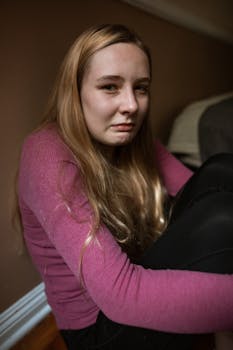Unlocking Resilience: Conquering PTSD and Reclaiming Your Life
Keywords: PTSD, Post-Traumatic Stress Disorder, trauma, recovery, therapy, treatment, coping mechanisms, resilience, mental health, anxiety, depression, flashbacks, nightmares, emotional regulation, self-care
Post-Traumatic Stress Disorder (PTSD) is a debilitating condition affecting millions worldwide. Triggered by experiencing or witnessing a terrifying event – from war and natural disasters to assault and accidents – PTSD leaves a lasting impact on the mind and body. While the shadow of trauma can feel insurmountable, understanding PTSD, its symptoms, and available treatment options is the first crucial step towards reclaiming your life and building resilience. This article delves deep into the complexities of PTSD, offering hope and practical strategies for recovery.
Understanding the Beast: Symptoms and Diagnosis of PTSD
PTSD isn't simply "getting over it." It's a complex mental health condition characterized by a range of persistent symptoms that significantly interfere with daily functioning. These symptoms are broadly categorized into four clusters:
- Intrusive Memories: Flashbacks, nightmares, and intrusive thoughts related to the traumatic event relentlessly replay in the mind, causing intense distress and fear. These involuntary memories can feel incredibly real, blurring the lines between past and present.
- Avoidance: Individuals with PTSD often actively avoid reminders of the trauma, including people, places, activities, or even thoughts and feelings associated with the event. This avoidance might manifest as isolating oneself, changing routines dramatically, or suppressing emotions.
- Negative Alterations in Cognition and Mood: This cluster encompasses a wide range of symptoms including persistent negative beliefs about oneself or the world, distorted memories of the trauma, feelings of detachment or estrangement from others, persistent negative emotional states (e.g., fear, anger, guilt, shame), and a diminished interest in activities once enjoyed.
- Alterations in Arousal and Reactivity: This includes hypervigilance (being constantly on alert), exaggerated startle response, difficulty concentrating, irritability or outbursts of anger, reckless or self-destructive behavior, and sleep disturbances.
- Trauma-Focused Cognitive Behavioral Therapy (CBT): This evidence-based therapy helps individuals identify and challenge negative thought patterns and beliefs related to the trauma, develop coping skills to manage distressing symptoms, and gradually confront trauma-related memories and situations in a safe and controlled environment. Techniques like exposure therapy are frequently used within CBT.
- Eye Movement Desensitization and Reprocessing (EMDR): EMDR is a unique therapy that involves following the therapist's finger movements with your eyes while recalling the traumatic memory. This process is believed to help process and integrate the traumatic experience, reducing its emotional impact.
- Medication: While medication alone doesn't cure PTSD, certain medications can be helpful in managing specific symptoms like anxiety, depression, and sleep disturbances. Antidepressants, anti-anxiety medications, and sleep aids may be prescribed in conjunction with therapy.
- Support Groups: Connecting with others who understand what you're going through can provide invaluable support, validation, and a sense of community. Sharing experiences and learning from others' journeys can significantly enhance the recovery process.
- Mindfulness and Meditation: Practicing mindfulness techniques can help you stay grounded in the present moment, reducing the frequency and intensity of flashbacks and intrusive thoughts.
- Physical Exercise: Regular physical activity releases endorphins, which have mood-boosting effects. Exercise can also help regulate sleep and reduce stress.
- Healthy Diet and Sleep Hygiene: Nourishing your body with a balanced diet and prioritizing sufficient sleep are fundamental to maintaining physical and mental health.
- Social Connection: Nurturing supportive relationships with loved ones can provide comfort, understanding, and a sense of belonging.
- Creative Expression: Engaging in creative activities like art, music, or writing can be a powerful way to process emotions and express oneself.
A diagnosis of PTSD typically requires experiencing at least one intrusive memory symptom, at least one avoidance symptom, at least two negative alterations in cognition and mood symptoms, and at least two alterations in arousal and reactivity symptoms for at least one month. A thorough assessment by a mental health professional is essential for accurate diagnosis and treatment planning.
Breaking Free: Effective Treatment Options for PTSD
Fortunately, PTSD is treatable. Many effective therapeutic approaches are available, and the key is finding the right fit for your individual needs and preferences. Some of the most commonly used and successful treatments include:
Building Resilience: Self-Care Strategies for Managing PTSD
Recovery from PTSD is a journey, not a destination. While professional treatment is crucial, incorporating self-care strategies into your daily routine can significantly boost resilience and improve overall well-being:
The Path to Healing: Hope and Recovery from PTSD
Recovery from PTSD is possible. While the journey may be challenging, the combination of professional treatment, self-care, and a supportive network can pave the way for healing and a fulfilling life. Don't hesitate to seek help. Reaching out to a mental health professional is a sign of strength, not weakness. Your life is valuable, and you deserve to live it free from the chains of trauma. Take the first step towards reclaiming your power and building a resilient future.

